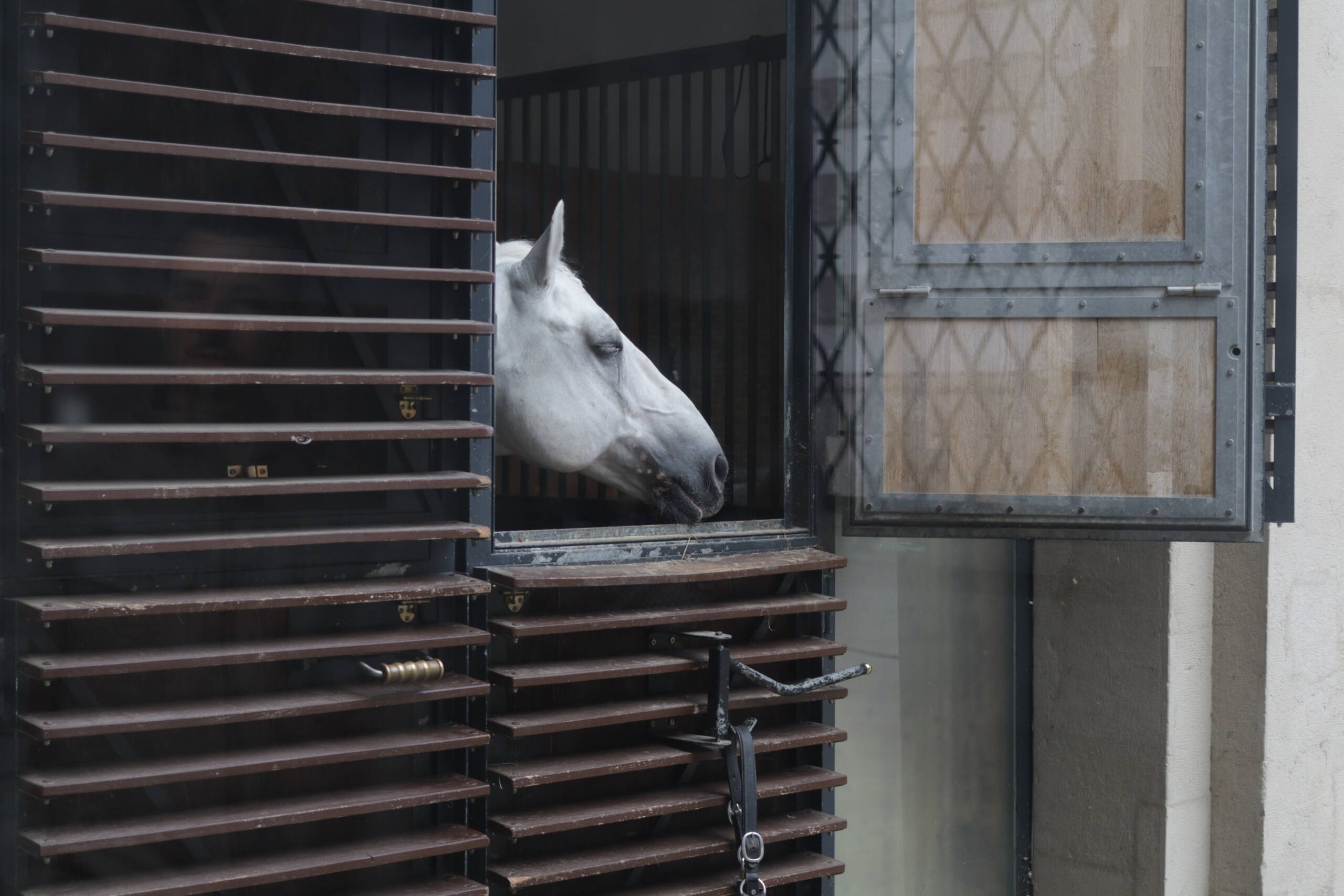There’s a quiet intimacy in this photo—the kind of detail that most visitors rushing through Vienna might overlook. Behind the heavy, louvered wooden shutters and steel-framed windows, the white head of a Lipizzaner horse rests gently on the sill, half hidden, half revealed. Its eyelids are relaxed, the muzzle soft, as if caught between curiosity and a doze. This is no ordinary stable scene; it belongs to the Spanish Riding School, one of Vienna’s most historic institutions.

The horse, a Lipizzaner, is almost sculptural in its profile—arched neck, finely cut jaw, ears tipped slightly back in calm attention. These horses have been bred for centuries not only for strength and stamina but for elegance, the very qualities that make them the stars of the school’s famous classical dressage performances. They live in baroque stables that feel as monumental as a palace, with ironwork, high doors, and architectural gravity that underlines their royal lineage.
What’s striking here is the contrast between softness and severity: the horse’s velvety white head framed by the hard lines of wood slats, steel hinges, and geometric shadows cast by the window’s lattice. You can almost sense the discipline of the place—the centuries of training, tradition, and ritual that the Spanish Riding School embodies—but also the gentle souls of the animals at its heart. One imagines the muffled sound of hooves on straw, the sharp scent of hay, and the hushed respect with which grooms and trainers move through these stables.
It’s a fleeting glimpse, but it carries the weight of history. This single horse, leaning out as if to breathe the city’s air, is part of a living legacy that stretches back to the Habsburg Empire. It’s Vienna in miniature: disciplined, graceful, a touch austere, and yet quietly alive with moments of tenderness like this one.
Leave a Reply